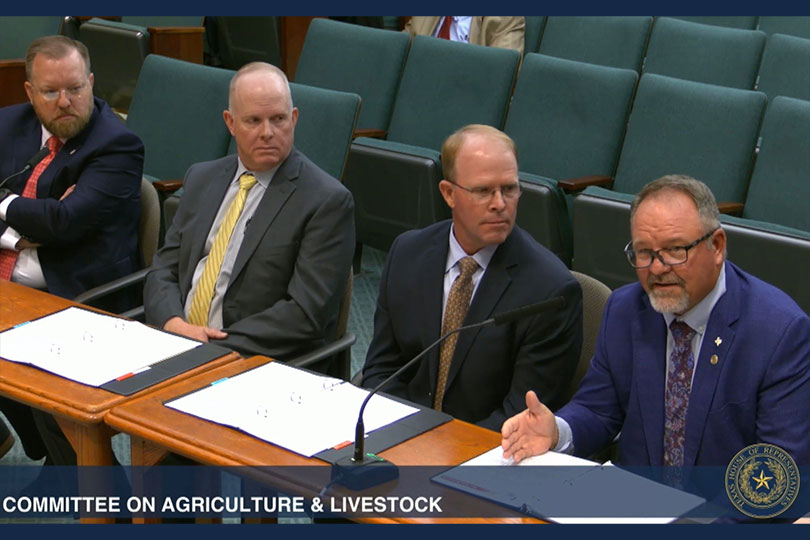By Julie Tomascik
Editor
New World screwworm cases are surging just south of the Texas-Mexico border, and ranchers say the clock is ticking to prevent a reinfestation that could devastate Texas livestock production and cost the economy billions.
That was the message from Warren Cude, a fifth-generation rancher from the Trans-Pecos region, who testified this week before the Texas House Agriculture & Livestock Committee. Cude, who also serves as the District 6 state director for Texas Farm Bureau, said the growing threat demands swift federal funding and a backup plan from the state if there are delays.
“If this pest crosses into Texas, the consequences will be catastrophic—not just for ranchers like me, but for the entire U.S. livestock industry,” Cude said. “We’re talking about billions in losses, untold suffering for animals and a major blow to rural economies.”
Screwworms are flesh-eating parasites that target warm-blooded animals, including cattle and wildlife. The pest was eradicated from the U.S. in the 1960s using the sterile insect technique, which involves releasing lab-raised sterile flies to interrupt the screwworm’s reproductive cycle.
But the screwworm continues to persist in parts of South America and the Caribbean, and it’s moving northward. Now, more than 3,800 cases have been reported in Mexico, and the screwworm is about 350 miles from Texas.
The U.S. Department of Agriculture (USDA) proposed a five-pronged response plan, including sterile fly dispersal to halt the pest’s northward spread. But Cude said dispersal alone won’t be enough without a domestic production facility capable of producing sterile flies.
USDA has a plan to use $300 million in emergency funds to construct a domestic facility. But if federal support lags, Cude said Texas should be prepared to step in, potentially through a cost-share approach, to protect Texas livestock, wildlife and the economy.
“We are already behind in constructing this production facility and cannot afford further delays,” he told the committee. “While we build production facilities, we need coordination among regulators, farmers and ranchers, and parasite experts to create strategies and tools that mitigate the impact on livestock production and wildlife populations.”
Cude also pointed to the growing challenge of large recreational properties with absentee landowners, especially in West and South Texas. These unmanaged lands could become a home for screwworms, making early detection and community outreach critical.
“Unfortunately, there are not enough cowboys to get the job done today,” he said. “So, we need to focus on ways to expand the impact of each person on the ranch.”
He praised the governor’s direction for Texas agencies to coordinate a response and called for continued leadership from both state and federal levels.
“We need this committee’s support to keep the momentum going—both in securing federal funding and, if necessary, exploring state-level solutions,” he said.
The Texas House Agriculture & Livestock hearing was held Monday, July 21.
For more information about the New World screwworm, visit screwwormtx.org.


Leave A Comment